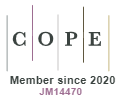Assessment of pain in newborns during the application of the expiratory flow increase technique
DOI:
https://doi.org/10.5585/conssaude.v12n3.4367Keywords:
Newborn, Peak expiratory flow rate, Respiratory therapy.Abstract
Introduction: The inability of the newborn to report verbally the pain and consequences caused by repeated exposure to a painful condition highlights the need for the professionals take heed to the importance of its assessment. Objective: To assess the presence or absence of pain when performed maneuvers to increase expiratory flow in newborn infants. Methods: We evaluated 70 infants, with the application of NIPS, which uses physiological and behavioral parameters in three separate stages – before, during and after five minutes maneuver EFI. The value considered pain score obtained above three points. Results: A statistically significant difference in pain score, when comparing the pre-intervention and during intervention with the operation of EFI (p 0.005). There was no statistical significance, comparing the pre-and post-intervention (p =0.11). Conclusion: In newborns of this study the technique of NIPS did not cause pain, suggesting the need for interventions for pain relief in this population.Downloads
Downloads
Published
2013-10-15
How to Cite
1.
Sousa EC de M, Xavier GN. Assessment of pain in newborns during the application of the expiratory flow increase technique. Cons. Saúde [Internet]. 2013 Oct. 15 [cited 2025 May 23];12(3):413-8. Available from: https://periodicos.uninove.br/saude/article/view/4367
Issue
Section
Applied Sciences
License
Copyright (c) 2013 ConScientiae Saúde

This work is licensed under a Creative Commons Attribution-NonCommercial-ShareAlike 4.0 International License.
Views
- Abstract 314
- PDF (Português (Brasil)) 240






